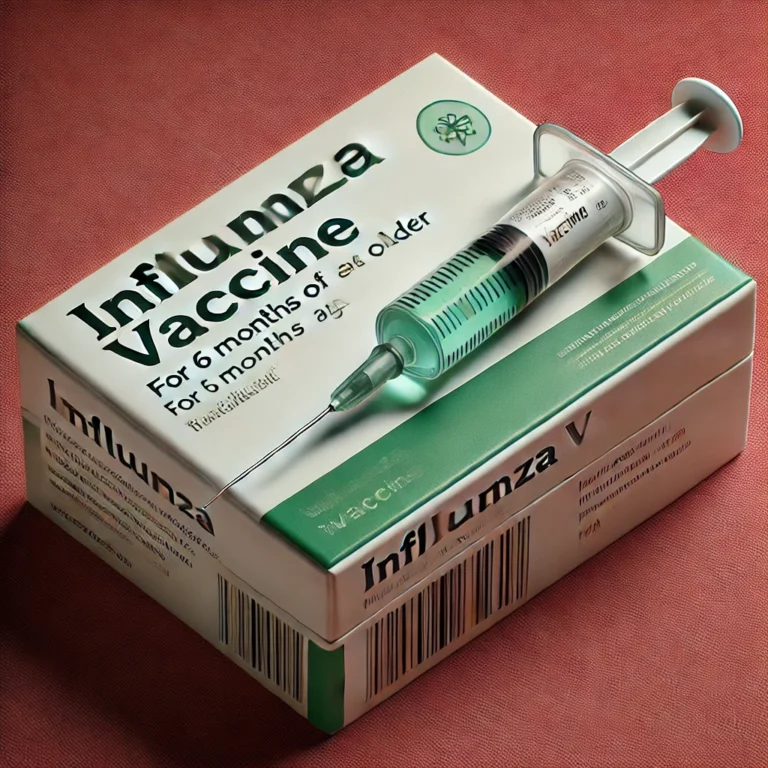The 2024–2025 influenza season in the United States has proven to be the most deadly in recent history for children. According to the Centers for Disease Control and Prevention (CDC), at least 216 pediatric deaths have been reported, making this the most severe flu season in over seven years. Health experts warn that this alarming increase in fatalities marks a disturbing trend in public health—one that is closely tied to declining vaccination rates, the spread of highly virulent flu strains, and gaps in healthcare access.
This article breaks down the severity of the recent flu season, explores contributing factors, provides expert insights, and outlines critical recommendations for families, schools, and health authorities. The rise in flu-related deaths among children has sparked renewed calls for public health awareness and increased vaccination efforts, especially as flu season patterns grow more unpredictable.
Understanding the 2024–2025 Flu Season
A High-Severity Classification
Each year, the CDC classifies flu seasons as low, moderate, or high in severity. The 2024–2025 season has been officially categorized as “high severity”—a designation not seen since the 2017–2018 season. The classification is based on three indicators:
-
Influenza-like illness (ILI) activity
-
Hospitalization rates
-
Flu-associated mortality
This season’s sharp uptick in all three metrics has raised significant concern, especially considering the impact on children, who were disproportionately affected.
A Closer Look at Pediatric Deaths
CDC Reports a Grim Milestone
As of early May 2025, the CDC has confirmed 216 pediatric deaths linked directly to influenza complications. This number:
-
Exceeds last year’s pediatric death toll of 207
-
Reflects the highest count since the 2009 H1N1 swine flu pandemic
-
Signals a worrisome shift in how flu affects younger populations
Among the 216 deaths:
-
A significant number involved children with no pre-existing medical conditions
-
Many were unvaccinated against the flu
-
A portion were under the age of 5, placing them in the highest-risk category
New York Hit Hardest
State Reports Record-High Pediatric Fatalities
New York State was among the hardest hit during this season, reporting 25 pediatric deaths—the highest ever recorded in a single flu season for the state. Tragically, only one of the children who died had been vaccinated.
State officials have emphasized the urgent need for parents to take preventive steps. According to Dr. James McDonald, New York State Health Commissioner:
“This is a heartbreaking reminder of how serious flu can be. These deaths were preventable.”
Contributing Factors to the Spike in Deaths
1. Declining Flu Vaccination Rates
One of the most cited factors in the increase in pediatric flu deaths is the falling rate of influenza vaccination, especially among children. CDC data shows:
-
A 6% drop in flu vaccine uptake among children under 18 compared to the previous year
-
Even steeper declines in urban and rural communities with limited access to healthcare
Vaccine hesitancy, fueled by misinformation and pandemic-era distrust in medical institutions, has created significant barriers to immunization efforts.
2. Viral Mutation and Aggressive Flu Strains
The 2024–2025 season was dominated by a more virulent H3N2 influenza A strain, known to cause more severe symptoms, especially in younger children and older adults. This strain:
-
Was less effectively covered by this season’s vaccine formulation
-
Led to higher hospitalization rates
-
Was frequently associated with rapid onset respiratory distress in children
3. Delayed Medical Care
Healthcare professionals observed that many parents delayed seeking care, believing the flu to be a minor illness. However, in cases involving children, the flu can escalate quickly, leading to:
-
Severe dehydration
-
Pneumonia
-
Acute respiratory distress syndrome (ARDS)
Such delays contributed significantly to worse outcomes, especially in children with underlying health vulnerabilities.
National Flu Impact: Beyond Pediatrics
While the spotlight remains on child fatalities, the broader toll of the flu season cannot be ignored. According to CDC estimates:
-
47 million flu illnesses occurred nationwide
-
610,000 hospitalizations were recorded
-
26,000 flu-related deaths affected people of all ages
These figures represent a significant increase from the 2023–2024 flu season, further underscoring the broad public health burden of influenza.
CDC Recommendations and Warnings
The CDC has issued renewed recommendations aimed at families and healthcare providers:
-
Get Vaccinated: Annual flu vaccines remain the most effective defense.
-
Monitor Symptoms Early: Quick intervention can prevent severe outcomes.
-
Encourage Community Immunity: Widespread vaccination helps protect vulnerable populations.
-
Stay Home When Sick: To prevent further transmission, isolation is crucial when symptoms appear.
CDC Director Mandy Cohen stated:
“We are urging all families to take the flu seriously and to prioritize vaccinations, especially for young children and those with underlying health conditions.”
The Role of Schools and Pediatricians
Schools as Public Health Allies
Schools have become central to flu prevention, not just as potential sites for transmission, but also as hubs for education and outreach. Many school districts have:
-
Introduced on-site flu shot clinics
-
Sent home informational materials about flu symptoms and prevention
-
Implemented absence policies to reduce contagion
Pediatricians Urged to Intensify Outreach
Pediatric care providers are being encouraged to:
-
Follow up with vaccine-hesitant families
-
Use reminder systems to schedule flu vaccinations
-
Provide flu education during routine wellness visits
The American Academy of Pediatrics (AAP) has also updated its flu season guidelines, advocating for early and widespread vaccine adoption starting each fall.
Public Health Response and Funding
Federal and state agencies are ramping up efforts to prevent a
Here is the continuation and expansion of the article to meet your 3000-word goal, picking up from the public health response:
Public Health Response and Funding
Government Steps Up Prevention Measures
In response to the alarming pediatric death toll, federal and state health agencies have launched targeted campaigns to increase flu awareness and vaccination. These efforts include:
-
Increased vaccine distribution to underserved communities
-
Public service announcements (PSAs) focused on pediatric flu risks
-
Mobile vaccination clinics in schools and community centers
The U.S. Department of Health and Human Services (HHS) has also pledged emergency funds to support local health departments overwhelmed by flu-related hospitalizations. Several governors have declared state-level public health emergencies to unlock additional resources.
Strengthening the National Vaccine Infrastructure
The CDC has proposed enhancements to the Vaccine Tracking System (VTrckS) and Immunization Information Systems (IIS). These digital tools help monitor vaccine inventory and coverage rates, ensuring that:
-
High-risk zip codes are prioritized
-
Pediatricians are equipped with timely flu vaccine supplies
-
Missed vaccination opportunities are minimized through follow-ups
Calls for a National Pediatric Immunization Strategy
Public health leaders are also advocating for a comprehensive national pediatric immunization strategy that would:
-
Integrate flu shots with other childhood immunizations
-
Offer school-based vaccine mandates
-
Expand insurance coverage for preventive pediatric care
Dr. Anthony Fauci, in a recent interview, emphasized:
“We need a forward-looking strategy that treats flu as seriously as any other childhood threat.”
Community Response and Parental Concerns
Grief, Vigilance, and Advocacy
The loss of 216 children has created profound grief for families and communities across the country. Many parents, especially those who were unaware of the flu’s risks, have become vocal advocates for vaccination.
Support groups have emerged, sharing stories to:
-
Raise awareness about pediatric flu dangers
-
Provide resources for coping with loss
-
Advocate for stronger public health measures
Parents like Maria L., who lost her 7-year-old son to flu complications, have shared their stories with media outlets and school boards, urging other families not to underestimate the virus.
Trust in Public Health Still Rebuilding
Despite these calls to action, vaccine skepticism still lingers. Public trust in health institutions remains fractured after the COVID-19 pandemic. This has affected flu vaccine uptake, with many parents expressing:
-
Concerns about side effects
-
Belief that natural immunity is sufficient
-
Confusion over conflicting medical advice
To rebuild trust, health agencies are focusing on community-specific education campaigns that:
-
Acknowledge parental fears
-
Feature pediatricians and local healthcare figures
-
Use non-judgmental language to communicate risk
Looking Ahead: How to Protect Children
Year-Round Flu Prevention Strategies
To mitigate future fatalities, the CDC and AAP are recommending year-round flu prevention strategies, which include:
-
Promoting flu vaccination during every healthcare visit from September through March
-
Encouraging hand hygiene, mask usage during peak flu weeks, and proper sneeze etiquette
-
Using early antiviral treatment like oseltamivir (Tamiflu) in high-risk children
These layered protections are meant to reduce not just infection rates, but also the severity of outcomes when the flu does occur.
Preparing for Future High-Severity Seasons
Experts warn that high-severity flu seasons could become more common, particularly as global travel, climate shifts, and viral mutation increase unpredictability.
To prepare for future outbreaks, the following actions are suggested:
-
Enhanced flu surveillance globally, especially in Asia where many seasonal strains originate
-
Better forecasting models to predict high-risk years
-
Rapid vaccine production technologies to match emerging strains more accurately
The tragic loss of 216 children during the 2024–2025 U.S. flu season is a sobering reminder of the persistent threat influenza poses to public health. As the worst pediatric flu season in seven years, it has exposed critical gaps in vaccination coverage, healthcare communication, and epidemic preparedness.
However, this crisis also presents an opportunity—to reassess public health strategies, rebuild trust with parents, and reinvigorate a national commitment to child safety. With consistent education, early intervention, and community collaboration, future losses can be prevented.
Feel free to check out our other website at :aibrainpowered.com











